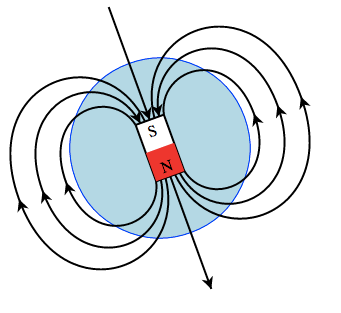What are magnetic monopoles and why are they important? If you ever broke a magnet in two when you were little (I was a weird kid, leave me be) you might have noticed that you would have two perfectly working magnets in your hands. That’s because magnets come as dipoles, having always a north pole and a south pole. All classical physics (both theory and experiments) is consistent with the magnetic dipole.
A magnetic monopole would be a particle with just one pole (either north or south). If we apply this idea to the classical equation of electromagnetism, a monopole is a magnetic charge analogous to electric charges, so it can generate a magnetic current.
In the ’30s, British physicist Paul Dirac showed theoretically that if any magnetic monopoles exist, then all electric charge in the universe must be quantised. We know that the electric charge is indeed quantised, but that does not imply the natural occurrence of monopoles.
This experiment describe in the paper is important because, although limited (the monopoles created are quasi-particles -> non isolated, dependent on the experimental setting), allows us to study them and construct an experiment to hopefully detected them in Nature.
Why is this important for Astrophysics? One of the problems with the Inflationary theory is the lack of monopoles in the observed universe. If Inflation is correct (as we seems to believe) we should be able to observe a large number of these particles. Since we don’t, we have to tinker with the inflationary theory to make it fit what we see. And that’s not ideal. In the words of of the Astronomer Royal Martin Rees:
Skeptics about exotic physics might not be hugely impressed by a theoretical argument to explain the absence of particles that are themselves only hypothetical. Preventive medicine can readily seem 100 percent effective against a disease that doesn’t exist!
References
Observation of Dirac Monopoles in a Synthetic Magnetic Field, M. W. Ray, E. Ruokokoski, S. Kandel, M. Möttönen, and D. S. Hall, Nature, 2014: dx.doi.org/10.1038/nature12954
The method used in the monopole creation has been developed in: Creation of Dirac Monopoles in Spinor Bose-Einstein Condensates, V. Pietilä ja M. Möttönen, Phys. Rev. Lett. 103, 030401 (2009): link.aps.org/abstract/PRL/v103/e030401
